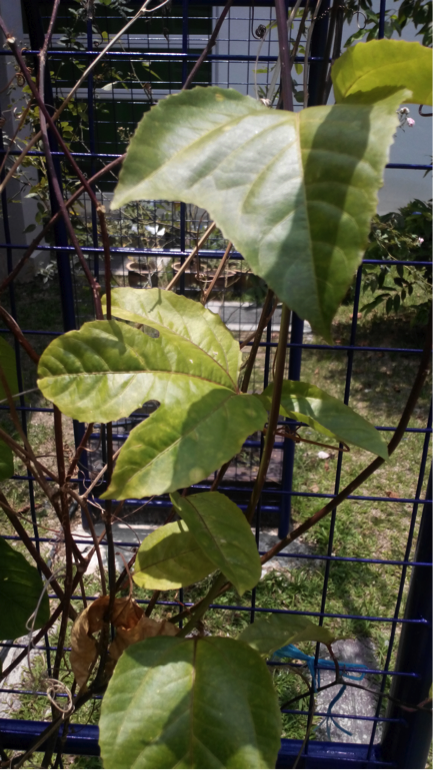Markisa
| Markisa | |
| Scientific Name | Passiflora edulis f. flavicarpa |
| Family | Passifloraceae |
 |
{slider=Common Name}
Passion fruit (US), Passionfruit (UK), Yellow Maracuya, Yellow Granadilla
{/slider}
{slider=Description}
Perennial, vine.
{/slider}
{slider=Plant Meterial of Interest}
Fruits are processed into juice
{/slider}
{slider=Geographical & Distribution}
It is cultivated extensively in tropical or near tropical all over the world for its fruit. Origin South America (Brazil)(4)
{/slider}
{slider=General Appearance}
Self sterile, mature fruit is bright yellow. Round to yellow, with a soft to firm, juice interior filled with numerous seed. Flower color white to tinged purple, height 6 m. The stems have coiling tendrils and are slender, green at the tips, and woody at the base (4).
{/slider}
{slider=Chemical contents}
Flavanoid glycosides such as isoorientin, luteolin 6-C-B-D-chinovoside, luteolin 6-C-β-D-fucoside, isovetexin and others (Zhau et al, 2009) contain anxiolytic compound , luteolin-7-O-(2ramnosylglucoside).
P. edulis f. flavicarpa contain isoorientin, the anxiolytic compound. Contain mono-C-deoxyhexosyl flavones. Lucenin-2, vicenin-2, isoorientin, isovitexin, luteolin-6-C-chinovoside and luteolin-6-C-fucoside (H.Li et al, 2011). Passion fruit peel contain pectin (Corona et al, 1996 & Prasad 1980, S.G. Kulkarni & P. Vijayanand, 2010)
{/slider}
{slider=Pharmacology}
The aerial part was anxiolytic at low dose but sedative at high dose (J. Deng et al, 2010). The aerial part could be used as a remedy of CNS disorder and sedative
{/slider}
{slider=Toxicity}
A case of significant cardiovascular and gastrointestinal toxicity self administration of terapeutic doses pf herbal medification, Sedacalm (500 mg of active ingredient 3 times per day (A.A. Fisher et al, 2000)
{/slider}
{slider=Reference}
1. A.A. Fisher, P. Purcell, D. G. Le Couteur (2000). Toxicity of Passiflora incarnata L. Clinal Toxicology, 38 (1), 63-66. http://informahealthcare.com/doi/pdf/10.1081/CLT-100100919
2.Globinmed. http://www.globinmed.com/index.php?option=com_content&view=article&id=101982:ficus-deltoidea-jack&catid=209&Itemid=143#r7 Accessed in 10 April 2014.
3.H.Li, P.Zhou, Q.Yang, Y. Shen, J. Deng, L.Li & D. Zhao (2011). Comparative studies on anxiolytic activites and flavonoid compositions of Passiflora edulis ‘edulis’ and Passiflora edulis ‘flavicarpa’. Journal of Ethnopharmacology 133, 1085-1090. Jun Deng, Y.Zhou, M. Bai & H. Li & L.Li (2010). Anxiolytic and Sedative Activites of Passiflora edulis f. flavicarpa. Journal of Ethnopharmacology Vol 128, Pg 148-153.
4.http://wildlifeofhawaii.com/flowers/937/passiflora-edulis-f-flavicarpa-lilikoi/
5.S.G. Kulkarni, P. Vijayanand (2010). Effect of ectraction conditions on quality characteristics of pectin from passion fruit peel (Passiflora edulis f. flavicarpa L)
6.Wikipedia. http://en.wikipedia.org/wiki/Passiflora_edulis Accessed in 19 March 2015.
Manuscript Prepared by: Norzainah Ahmad
{/slider}
- Last updated on .
- Hits: 2283
